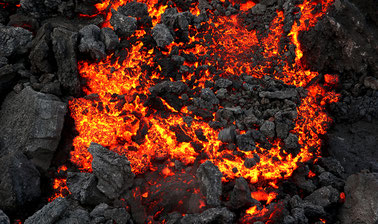
StanfordOnline: Reservoir Geomechanics
by Stanford University
Reservoir Geomechanics Course
Offered by StanfordOnline
Course Description
Welcome to an exciting and comprehensive interdisciplinary course that bridges the gap between rock mechanics, structural geology, earthquake seismology, and petroleum engineering. This course is designed to equip you with the knowledge and skills necessary to address a wide range of geomechanical challenges encountered in the oil and gas industry. Whether you're a geoscientist, engineer, or research scientist, this course will provide you with valuable insights into the complex world of reservoir geomechanics.
What Students Will Learn
- Fundamental principles of geomechanics applicable across various disciplines
- Prediction of pore pressure in reservoirs
- Estimation of hydrocarbon column heights and fault seal potential
- Determination of optimally stable well trajectories
- Calculation of casing set points and mud weights
- Analysis of reservoir performance changes during depletion
- Understanding of production-induced faulting and subsidence
- Application of geomechanical principles to shale gas and tight oil recovery
- Management of risks associated with triggered and induced seismicity
Pre-requisites
- Introductory Geology and Geophysics
- Familiarity with principles of drilling and petroleum production
Course Contents
- Basic principles of geomechanics
- Pore pressure prediction techniques
- Hydrocarbon column height estimation
- Fault seal potential analysis
- Well trajectory optimization
- Casing set point and mud weight determination
- Reservoir performance during depletion
- Production-induced faulting and subsidence
- Geomechanical issues in shale gas and tight oil recovery
- Triggered and induced seismicity risk management
Who This Course Is For
- Geoscientists in the petroleum and geothermal industries
- Engineers working in oil and gas exploration and production
- Research scientists interested in stress measurements and their applications to faulting and fluid flow in the Earth's crust
- Students and professionals looking to expand their knowledge in reservoir geomechanics
Real-World Applications
- Improve reservoir characterization and production strategies
- Enhance well planning and design for optimal stability and productivity
- Mitigate risks associated with drilling and production operations
- Develop more accurate models for reservoir behavior during depletion
- Contribute to the safe and efficient extraction of hydrocarbon resources
- Apply geomechanical principles to emerging areas such as shale gas and tight oil recovery
- Assess and manage risks related to induced seismicity in energy production
Syllabus
- 20 lectures (90 minutes each, divided into ~20-minute segments)
- 2 lectures released weekly
- Lecture 1: Course overview
- Lectures 2-17: Based on 12 chapters of Dr. Zoback's textbook, "Reservoir Geomechanics"
- Lectures 18-19: Geomechanical issues in shale gas and tight oil recovery
- Lecture 20: Managing risks of triggered and induced seismicity
- 8 Homework assignments with associated video modules
- Online discussion forum for participant interaction
- Grading based solely on homework assignments (multiple choice and numerical entry responses)
- No quizzes or exams
This course offers a unique opportunity to gain expertise in the critical field of reservoir geomechanics, providing you with the tools and knowledge to excel in the energy industry and contribute to cutting-edge research in geosciences.









